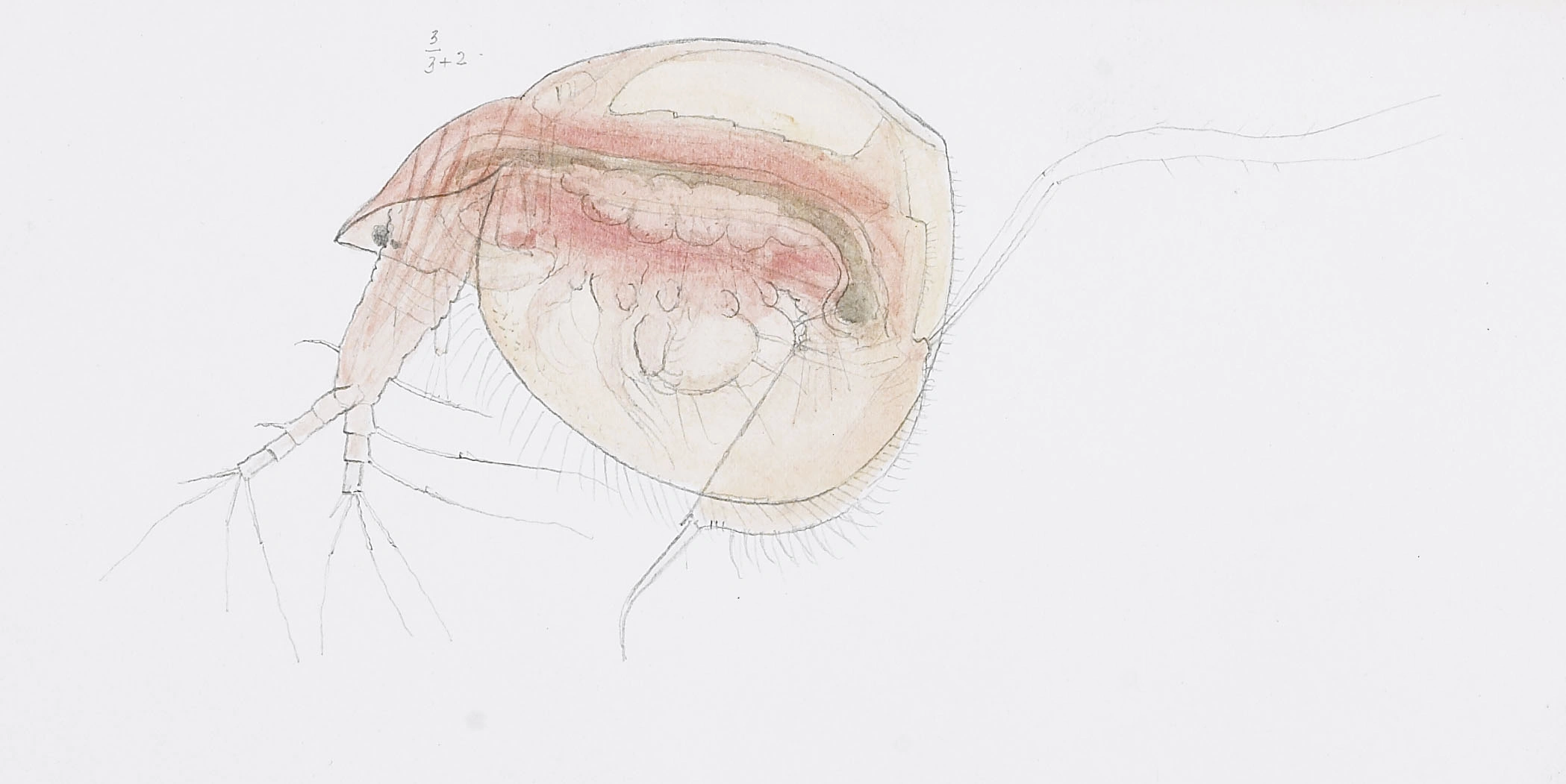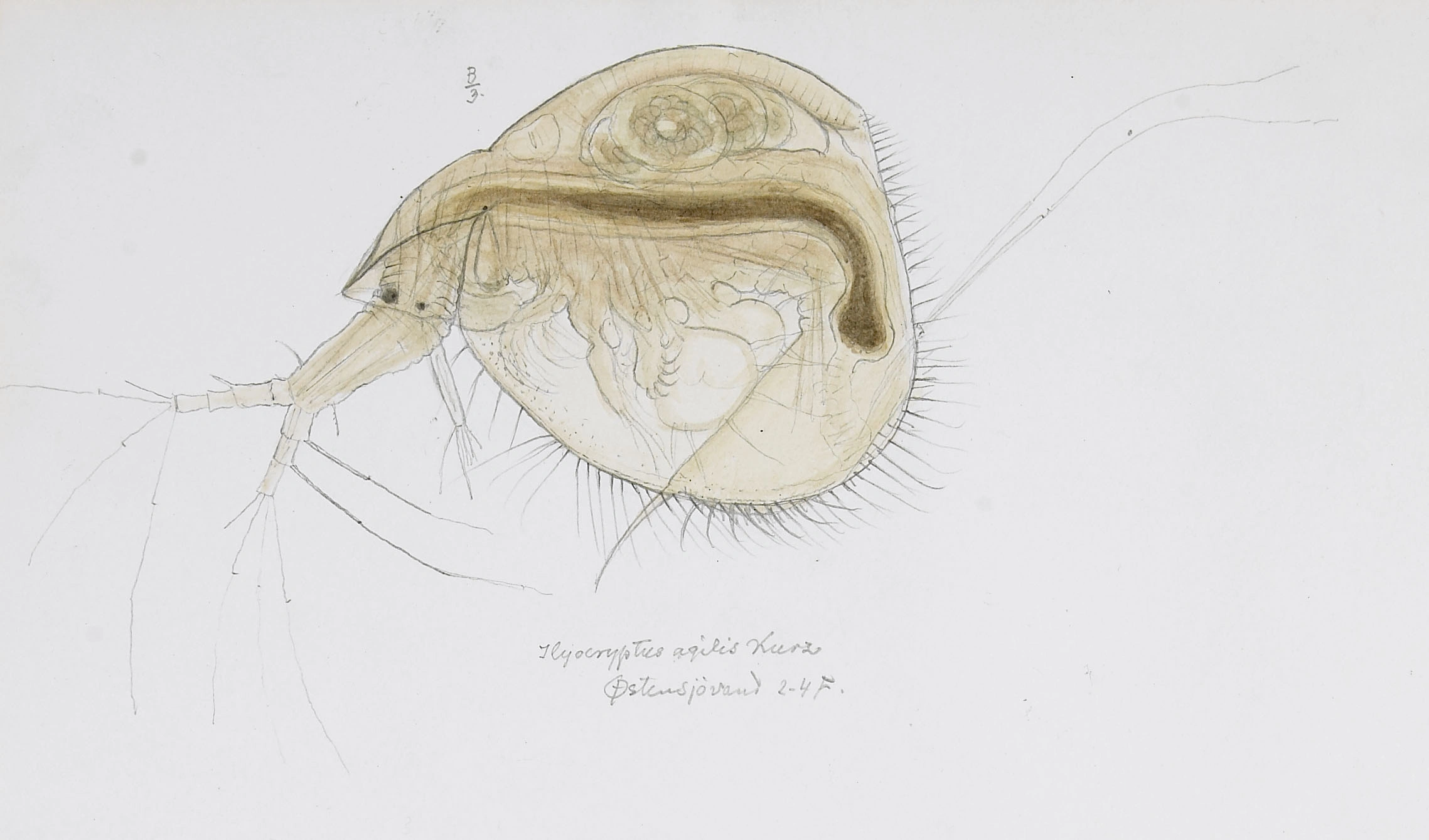Ilyocryptus acutifrons
Ilyocryptus acutifrons (female)
Ilyocryptus acutifrons is a small and strange creature which lives in the bottom sediment of both lakes and ponds. It is truly overlooked and only found in a limited number of localities, spread all over the country.
Key characteristics
Seen from the side, Ilyocryptus acutifrons is somewhat slimmer than I. sordidus and the head is comparatively larger. Anteriorly its head is elongated into a strongly protruding, acute angle. The first pair of antennae are considerably shorter and thicker than in I. sordidus, while the second pair are far larger and more powerfully built. Its post abdomen is much shorter and wider than in I. sordidus. Instead of a double row of teeth on the dorsal part of the hind edge of postabdomen, I. acutifrons has a single row. The basal spines of the abdominal claw are short. It has a yellowish colour, with only a slight trace of red.
Female: Length 0.6–0.9 mm
Male: Length 0.6–0.8 mm
Ecology and distribution
I. acutifrons is only found in a few water bodies, and has a scattered distribution in Norway. It is found in both lakes and ponds but never below 700 m a.s.l. The records so far are from water with pH ranging from 4.8 to 7.5, while conductivity are between 1 and 22 mS/m. Like other species within this genus, I. acutifrons may have been underestimated because it mostly lives hidden in the mud.
Conductivity (m S/m)
Surface area (da)
Elevation (m a.s.l.)
Look-alikes
Ilyocryptus agilis and I. sordidus


